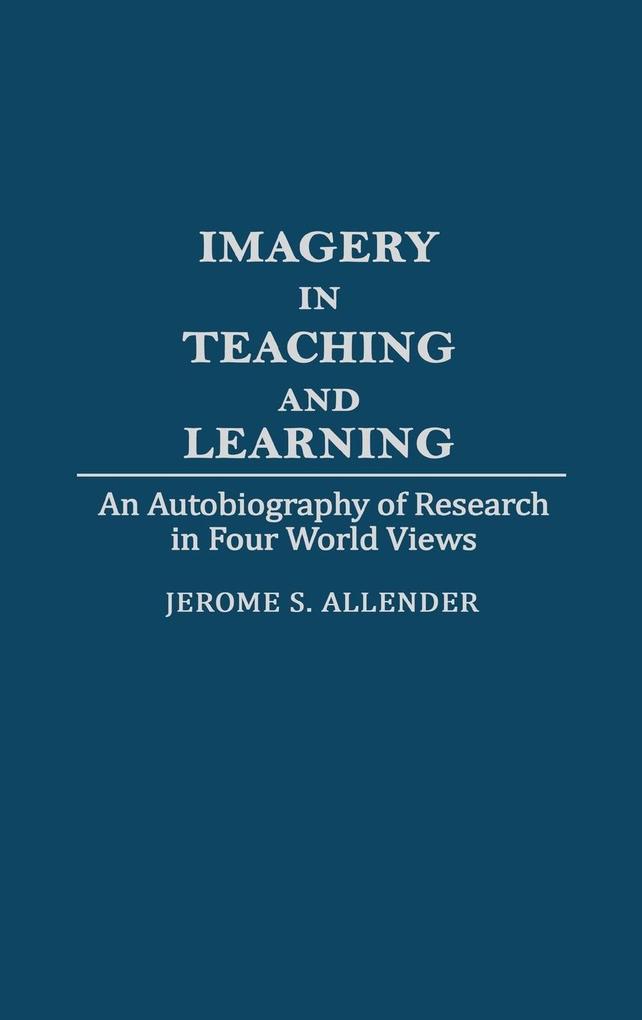
Zustellung: Mi, 23.07. - Sa, 26.07.
Versand in 7 Tagen
VersandkostenfreiBestellen & in Filiale abholen:
As Jerome S. Allender began to study how elementary school children can use mental imagery to facilitate learning arithmetic, spelling, and vocabulary, it became apparent that imagery techniques were also highly effective tools in the adult learning process, the improvement of teaching skills, and the enhancement of the human learning experience in general. These findings, accompanied by supporting data and then given practical application, form the core of this volume, explaining how imagery activities access learning potential.
Four unique world views form the framework for the study as each examination of mental imagery procedures is guided by quantitative research, action research, qualitative research, or humanistic research principles. This comparative approach broadens the scope of the work to include not only relevance in the classroom, but also exploration of the role imagery plays in the interaction of fantasy and reality. Researchers will be intrigued by the scientific methodology Allender employs in his study, and teachers will appreciate the practical applications as he investigates a topic whose implications are as limitless as the imagination itself.
Four unique world views form the framework for the study as each examination of mental imagery procedures is guided by quantitative research, action research, qualitative research, or humanistic research principles. This comparative approach broadens the scope of the work to include not only relevance in the classroom, but also exploration of the role imagery plays in the interaction of fantasy and reality. Researchers will be intrigued by the scientific methodology Allender employs in his study, and teachers will appreciate the practical applications as he investigates a topic whose implications are as limitless as the imagination itself.
Inhaltsverzeichnis
Foreword by Lee Shulman
Preface
Introduction
Imagery
Four Methodological World Views
366 Experience Experiments
Four Studies
Study 1: A Search for Truth
Study 2: A Search for Change
Study 3: A Search for Meaning (Part 1)
Study 3: A Search for Meaning (Part 2)
Study 4: A Search for Connection
Comparisons and Conclusions
Imagery in Four Methodological World Views
How Methods Construct Reality
Images of Education
References
Author Index
Subject Index
Preface
Introduction
Imagery
Four Methodological World Views
366 Experience Experiments
Four Studies
Study 1: A Search for Truth
Study 2: A Search for Change
Study 3: A Search for Meaning (Part 1)
Study 3: A Search for Meaning (Part 2)
Study 4: A Search for Connection
Comparisons and Conclusions
Imagery in Four Methodological World Views
How Methods Construct Reality
Images of Education
References
Author Index
Subject Index
Produktdetails
Erscheinungsdatum
30. März 1991
Sprache
englisch
Seitenanzahl
260
Autor/Autorin
Jerome S. Allender
Verlag/Hersteller
Produktart
gebunden
Gewicht
558 g
Größe (L/B/H)
240/161/19 mm
ISBN
9780275936389
Entdecken Sie mehr
Pressestimmen
"Clearly this is a significant book. It is a direct expression of the transformation taking place in our civilization and in our world view. This book exhibits the dawning, jolting, even painful recognition that social science is now dangling between its positivist past and an uncertain future....Future researchers will see this as a valuable account of how researchers confront changing paradigms in social science."- Ron Miller, Editor Holistic Education Review
Bewertungen
0 Bewertungen
Es wurden noch keine Bewertungen abgegeben. Schreiben Sie die erste Bewertung zu "Imagery in Teaching and Learning" und helfen Sie damit anderen bei der Kaufentscheidung.










